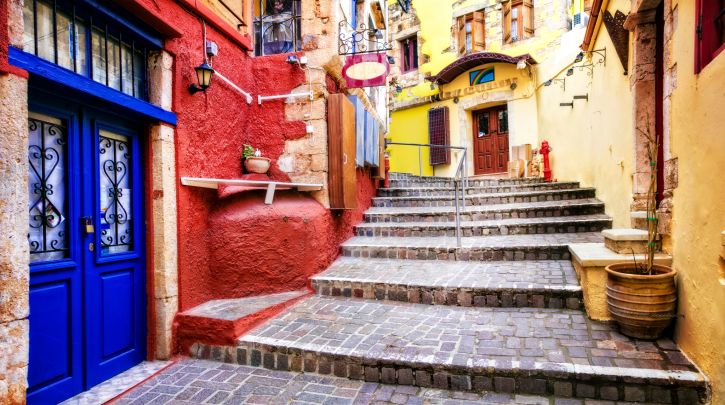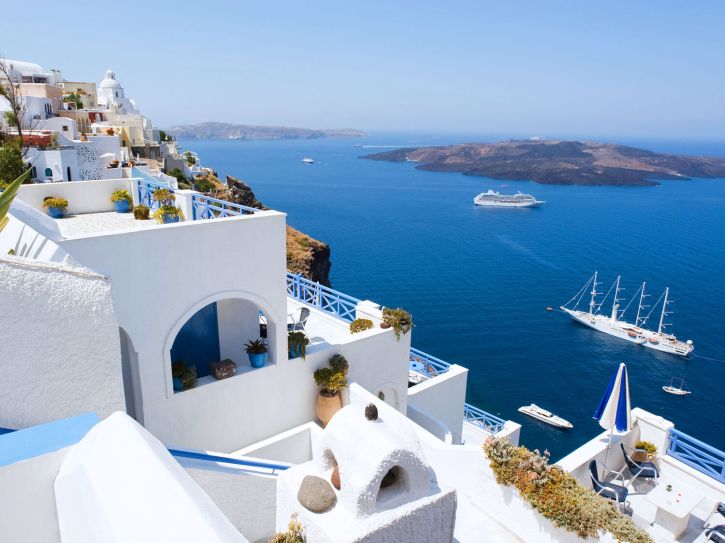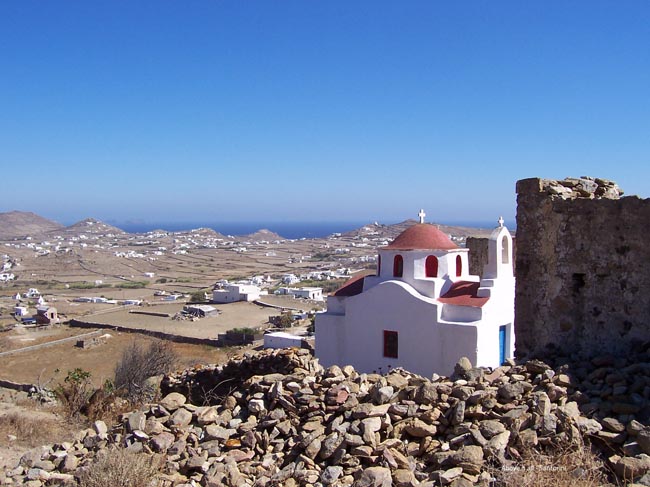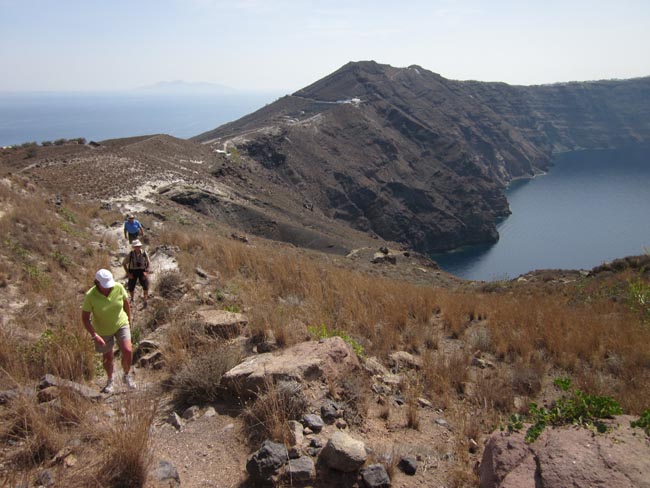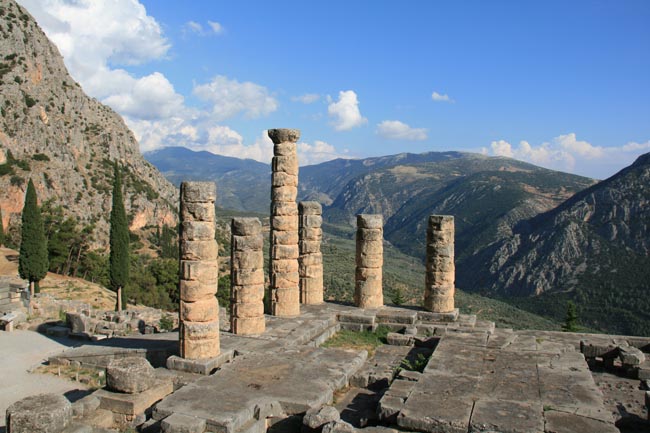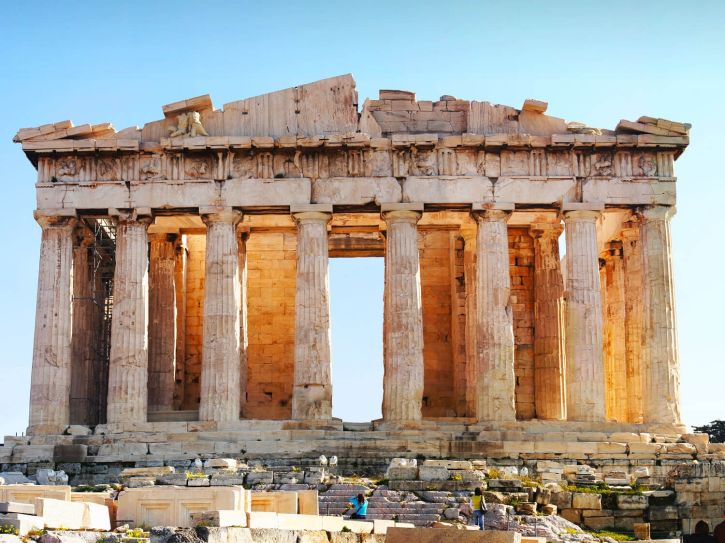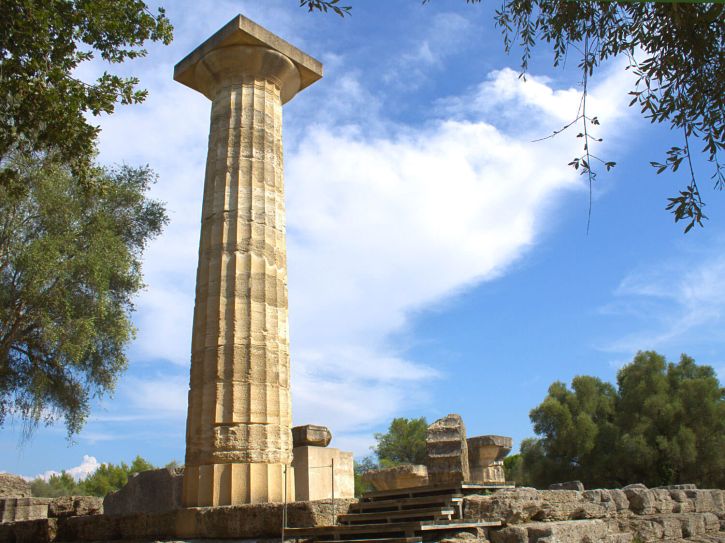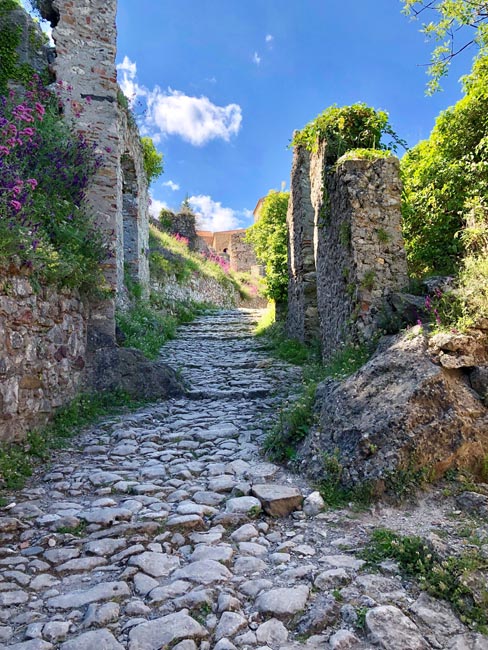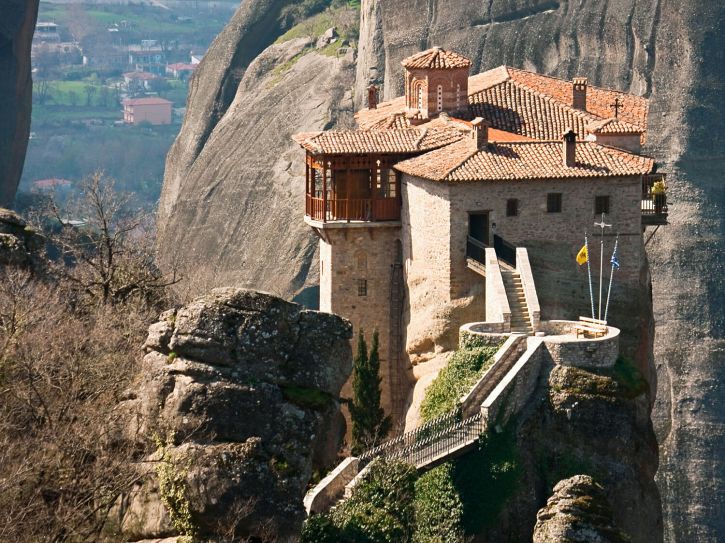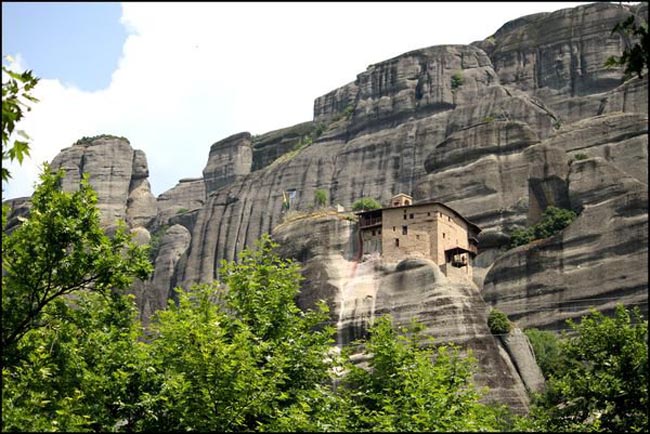Prices below are per person, twin-sharing costs in US Dollars (USD). Pricing does not include airfare to/from the tour and any applicable taxes. For single supplement rates and taxes (if any), please refer to below Prices & Dates table. For general information on flights to/from the tour, click here.
Your Travel and Accomodations Arranged For You
(With English Speaking Guides and Staff.)
Driver, Dinner, and Local Guide Tips Included.
Authentic Local Experiences With Lots Of Inclusions.
Select a date below to reserve your spot:
Optional Single Supplement: $1080 USD (number of singles limited).
This tour may require a mandatory single supplement charge of $550 if you join our share program and we are unable to pair you.
Download Itinerary
Day 1 Arrival in Athens
Today we arrive in Athens, the capital of Greece and the historical capital of Europe.
Athens has a long history dating from the first settlement in the Neolithic age; in the 5th Century BC, the city’s values and civilization acquired a universal significance. In 1834, it became the capital of the modern Greek state and an attractive modern metropolis with unrivalled charm.
Overnight in Athens.
Included Meal(s): Dinner
Day 2 Athens - Mycenae & Epidaurus - Nafplio (Nauplia)
We board our coach to drive to ancient Corinth for a brief visit. Back in ancient times Corinth was one of the three major powers in Greece, and took part in all the battles against the Persians. It was from one of the richest cities and this is quite evident by its remains, including the huge Agora (market place) and Apollo's Temple (6th c BC).
We continue to Mycenae, a citadel occupying the triangular summit of a low hill between two gorges. The Mycenaeans excelled in this style of building using large, unworked stones. These massive fortifications were begun in the 14th century, followed by Tiryns and Dendra, Argos and Athens, as well as a host of subsidiary forts and, eventually, a huge wall across the Corinthian isthmus. The famous Lion Gate, and similar constructions at Gla and Tiryns, were built in the 13th century BC. Here we will see vestiges of a kingdom that, for 400 years (1600-1200 BC), was the most powerful in Greece. We enter through the Lion Gate and see the Great Court where Agamemnon is believed to have been murdered in one of the chambers.
Later we travel to Epidaurus, a sanctuary of Asklepios, the God of Medicine. The sanctuaries of Asklepios, the healer god, were as much sanatoria, health farms or spas, as places of worship. This was the most prestigious centre of the cult in the Classical period and received a galaxy of splendid buildings spanning the whole of the 4th century BC. We'll tour the site, including, of course, the famous theatre constructed in the late 4th century BC. It is considered to be the most perfect ancient Greek theatre with regard to acoustics and aesthetics; indeed performances in this spectacular setting continue to this day.
We continue toward Nafplio.
Overnight near Nafplio.
Included Meal(s): Breakfast and Dinner
Not finding what you're looking for?
Our specialists can take away the stress and create a private custom tour tailored to your exact interests and budget.
Day 3 Naflplio - Mystra - Sparta
This morning we spend a bit of time exploring the charming seaside town of Nafplio before joining we a dramatic winding mountain drive toward Sparta, arriving mid-morning.
We visit the Museum of the Olive and Greek Olive Oil in Sparta, which aims to highlight the culture and technology of the olive and olive production, which is inextricably linked with the Greek and Mediterranean identity. Unique in Greece, the museum is located in the heart of Laconia, one of the main olive producing locations in Greece.
We continue to our tour of Mystra, an impregnable fortress built by Guillame de Villehardouin in 1249. When the Byzantines won back the Morea from the Franks, Emperor Michael VIII Palaeologus made Mystra its capital and seat of government. It soon became populated by people from the surrounding plains seeking refuge from invading Slavs.
During the rule of the despots, while the empire plummeted into decline elsewhere, Mystra experienced a renaissance, but then declined under Turkish rule. It was captured by the Venetians in 1687 and it thrived once again with a flourishing silk industry and a population of 40,000. It was recaptured by the Turks in 1715, and from then on it was downhill all the way. It was burned by the Russians in 1770, the Albanians in 1780 and Ibrahim Pasha in 1825. Not surprisingly, at the time of Independence it was in a very sorry state, virtually abandoned and in ruins, though since the 1950s much restoration work has taken place.
Back in Sparta, you may choose to visit the archaeological remains of ancient Sparta (optional), including the 2nd century BC theatre, the site's most discernible ruin. There is not much remaining of this once mighty civilization, but those interested in Spartan history may find the visit rewarding.
Overnight in Sparta.
Included Meal(s): Breakfast and Dinner
Day 4 Sparta - Olympia
Driving from Sparta to Olympia, we arrive in the early afternoon. After lunch we will have a tour of the site of ancient Olympia and the excellent on-site museum. This was a place in ancient Greece where rival states shed their protective armour and congregated in peace to enjoy the ancient games and make offerings to the Gods. The temple of Zeus once dominated the entire complex and housed the 13 m (43 foot) statue of Zeus, considered by the Greeks to be one of the original Seven Wonders of the Ancient World.
We will also see the Stadium as well as the Temple of Hera, which is the site's most intact structure. This is the oldest structure in the precinct, originally dedicated to Zeus as well as Hera, and gradually rebuilt from wood into stone. The walls were of mud-brick with a tiled roof.
The games, which were the most prestigious athletic event in Greece, were held in conjunction with a festival to Olympian Zeus. Three heralds were sent to all the Greek states to announce their date and declare the universal truce, under which all hostilities were suspended for one week. The games were brought to an end in AD 393, under an edict of the Emperor Theodosius that banned all pagan festivals. The temples were destroyed in AD 426.
Overnight in Olympia.
Included Meal(s): Breakfast and Dinner
Day 5 Olympia - Delphi Touring
We drive across the Rio-Antirrio Bridge en route to Delphi, arriving in the early afternoon. On arrival we will have a guided tour of this spectacular site and its excellent museum.
According to mythology, Zeus released two eagles at opposite ends of the world and they came to rest at Delphi, the 'navel of the world.' Delphi is known as the center of worship for the God Apollo, son of Zeus who embodied moral discipline and spiritual clarity. But even before the area was associated with Apollo there were other deities worshipped here including the earth goddess Gea, Themis, Demeter and Poseidon, the well known god of the sea. By the end of the Mycenaean period Apollo had displaced these other deities and became the guardian of the oracle.
Delphi was the site of the Delphic oracle, most important oracle in the classical Greek world, and it was a major site for the worship of the god Apollo. His sacred precinct in Delphi was a Pan-Hellenic sanctuary, where every four years athletes from all over the Greek world competed in the Pythian Games, the precursor to the Olympic Games.
Overnight in Delphi.
Included Meal(s): Breakfast and Dinner
Day 6 Delphi - Kalambaka - Monasteries of Meteora
Today we drive from Delphi to Kalambaka. Our route takes us through the central plains, a rich agricultural land often referred to as the "bread basket" of Greece.
Later this afternoon we have a panoramic drive around the Monasteries of Meteora, built upon rocks that rise vertically from the plains below. These "Rocks of the Air" are visible for miles around and are crowned with old monasteries that cling to their summits. The afternoon light provides ideal conditions for photography; making our roadside photo stops today allow us to spend more time on the sites tomorrow when we visit the monasteries.
Overnight in Kalambaka.
Included Meal(s): Breakfast and Dinner
Day 7 The Monasteries of Meteora - Athens
The Meteora is one of the largest and most important complexes of Eastern Orthodox monasteries and is second only to Mount Athos. The monasteries are built on natural sandstone rock pillars at the northwestern edge of the Plain of Thessaly. This morning we visit several monasteries* (usually 3 in total; periodic closures determine which ones we visit).
Later today we return by road to Athens, visiting Thermopylae, where the great historical battle between the Spartan King Leonidas, the ultimate soldier-king, and the huge army of Persians took place.
* Men must wear long trousers for today's monastery visits, and women must wear a long wrap/skirt, which you can either bring from home or purchase at the site for just a few Euros.
Overnight in Athens.
Included Meal(s): Breakfast and Dinner
Day 8 Athens: City Touring
Today we enjoy a guided tour of Athens, the heart and soul of Greece.* A large part of the town's historic centre has been converted into a 3-kilometre pedestrian zone (one of the largest in Europe), leading to the major archaeological sites, reconstructing -- to a large degree -- the ancient landscape, thus allowing us to avoid the city's horrendous traffic. As such, much/most of our tour today will be conducted ON FOOT at a leisurely pace.
We start at the Acropolis (with hopes to beat the heat/crowds), near the site of the Dionysos Theatre. Constructed in the 6th century BC, it is one of the world's oldest theatres and the place where the great works of Aeschylus, Sophocles, Euripides and Aristophanes were first performed. We will also see a more recent theatre, the Odeon of Herod Atticus from the second century AD, which is still used for concerts and performances.
Ascending to the top of the Acropolis, we will see magnificent buildings dating from the 5th century BC, the Golden Age of Athens. On the highest point on the Acropolis is the Parthenon, often considered the finest monument to Greek civilization. The temple was dedicated to Athena "Parthenos," the virgin and patron goddess of the city.
After our Acropolis tour, we'll descend by foot and enter the Ancient Agora located adjacent to the Plaka, the old town of Athens. Among the numerous sights in this archaeological park are the well-preserved Temple of Hephaistos and the landmark Roman era Tower of the Winds.
Our guided tour ends with a guided visit of the Acropolis Museum, located at the foot of the Acropolis. The museum was built to house every artifact found on the rock, from the Greek Bronze Age to Roman and Byzantine Greece; nearly 4,000 objects are exhibited over an area of 14,000 square metres. After our tour you are free to wander and explore on your own or make your way back to the hotel with your Tour Leader's assistance.
* The exact order of our sightseeing in Athens may be altered by your Tour Leader depending on several variables and their judgement on how best to run today's tour.
Overnight in Athens.
Included Meal(s): Breakfast and Dinner
Day 9 Athens - Ferry to Mykonos
Early this morning we travel by local ferry from Athens' port, Pireaus, to the island of Mykonos.*
From the harbour waterfront, you can watch the local fishing boats, or venture into the labyrinth of dazzling, white-washed streets to the many churches, tavernas, or shops selling artisan crafts. In the distance stand a string of windmills that once harnessed the breezes of days gone by. The sugar cube buildings are stacked around a cluster of seafront fishermen's dwellings. The labyrinth design was intended to confuse the pirates who plagued Mykonos in the eighteenth and 19th centuries. The whitewashed houses concealing dozens of little churches, shrines and chapels.
* PORTERS ARE GENERALLY NOT AVAILABLE ON THE GREEK ISLES, OR ON FERRIES BETWEEN THEM. You MUST be able to carry / wheel your baggage on and off ferries.
Overnight on Mykonos.
Included Meal(s): Breakfast and Dinner
Day 10 Mykonos: Walking Tour & Boat Trip to Delos
This morning we'll take you on an orientation walking tour of Mykonos Chora. We wander the pirate-proof streets of town and see the Paraportiani Church near the quay, an architectural masterpiece of five chapels in one.
We then meet the boat that will take us to the tiny sacred island of Delos (40 minutes away). Delos gives the whole group of islands surrounding it their name, the Cyclades -- so named because they form a circle (kyklos) around Delos. For nearly 1,000 years this sanctuary was the political and religious centre of the Aegean. Leto, pregnant by Zeus, gave birth to the twins Apollo and Artemis on Delos. In the 18th century BC, the annual Delia Festival was established on the island to celebrate the birth of Apollo. Delos was populated during its height in Hellenistic times with wealthy merchants, mariners and bankers from as far away as Egypt and Syria.
During our guided walking tour of Delos, we will see the Agora of the Competialists, Roman merchants or freed slaves who worshipped the guardian spirits of crossroads; the Sanctuary of Apollo, the three temples of Apollo and the Sanctuary of Dionysus. In the House of the Masks we are able to see a mosaic portraying Dionysus riding on a panthers back. The theatre here could seat 5,500 people.
We return to Mykonos where you will have free time to explore Mykonos town on your own.
Overnight on Mykonos.
Included Meal(s): Breakfast and Dinner
Day 11 Mykonos - Ferry to Santorini
Today we take a ferry or hydrofoil (depending on scheduling) to the island of Santorini.
Vast geological upheavals have given this island its unique form resulting in the nickname, "Pre-Historic Pompeii." The effect of terracing makes this unlike any other island, Greece's most visually stunning. Santorini is the island of churches, wine, and donkeys! From as early as 3000 BC the island developed as an outpost of Minoan civilization until around 1650 BC when the volcano erupted. At this point the island's history became linked with the legend of Atlantis.
At some point in our visit, we'll stop in at the The Museum of Prehistoric Thera. It was built on the site of the old Ypapanti Church, destroyed in the 1956 earthquake. The museum houses a very large number of ancient artifacts from various excavations on Santorini, such as at Akrotiri and at the nearby Potamos site.
Overnight on Santorini.
Included Meal(s): Breakfast and Dinner
Day 12 Santorini: Akrotiri & Island Tour
Visually, Santorini is the most spectacular of the Cycladic islands. With its brilliant flooded caldera, high cliffs and charming villages, it is the Greek Isle of everyone's dreams. Our coach tour today will take us to Santorini's many highlights.
We begin with a visit to Akrotiri for a thorough guided tour. Excavations have revealed a complete prehistoric Minoan city with squares, streets, and two-storey houses, which contained marvelous frescoes. The buildings date to the late 16th century BC. No skeletons or treasures have been found in Akrotiri, so historians think that the inhabitants were forewarned of the eruption and were able to escape. The excavations have yielded evidence that has revolutionized our knowledge of the Late Bronze Age; indeed the town has been called a "Bronze-age Pompeii."
We will also visit the hilltop village of Pyrgos, once the capital of the island and home to more than 30 churches. The village is composed of traditional houses built around the Venetian Castle and the small streets follow the shape of the hill. Climbing from the square up to the castle of Pyrgos, the stone houses crowd more densely together within the labyrinth of narrow vaulted lanes.
Our drive around the island will also take us up to the Prophet Elias Monastery built on the highest point of the island in 1711 AD. Though we will not visit inside the monastery, the view from here is breathtaking.
Fira is the capital of the island and the most important village. Perched on the edge of an impressive cliff 260m high, the town offers great panoramic views over the submerged volcano. Here the small streets are filled with all kind of shops, cafes, and restaurants. After an orientation walk through the town, you might choose to visit the impressive Archaeological Museum in your spare time (optional). This museum features many artifacts dating back to the time of the Cycladic Civilization. The most impressive legacies of this civilization are the statuettes carved from Parian marble -- the famous Cycladic figurines. Like statuettes of Neolithic times they depicted images of the Great Mother. Other remains include bronze and obsidian tools and weapons, gold jewelry, and stone and clay vases and pots.
Return to Kamari Beach (those who wish to extend their time in Fira can return to Kamari using the public bus system).
Overnight on Santorini.
Included Meal(s): Breakfast and Dinner
Day 13 Santorini: Fira - Imerovigli - Oia / Free Afternoon
This morning we will head to the small town of Oia, situated at the northern tip of the island. We start by taking the public bus to Fira, where we enjoy the stunning caldera views and dramatic setting. From here we will follow the scenic path along the vast caldera rim. Our route leads up through the village of Firostefani and brings us to the village of Imerovigi. The views are ever-changing as the perspective of the island changes minute by minute. We will look out to Skaros, the remains of a Venetian Castle built in 1207 by Marco Sanudo, the ruler of all Cyclades islands that time.
From Imerovigli we will continue by bus to Oia (pronounced "EE-ah"). Built on a steep slope of the caldera, many of Oia's dwellings nestle in the niches hewn in the volcanic rock. This was once a major fishing port but is principally known these days as perhaps the most dramatically situated towns in the whole of Greece. The peak of prosperity for this small port town was reached in the late 19th and early 20th centuries. At that time the locally based merchant fleet plied its trade in the Eastern Mediterranean, especially from Alexandria to Russia. The two-story captains' houses built on the highest part of the village are a reminder of the village's former affluence. Oia is a place where many artists have found their inspiration... and here we will wander the narrow streets and old ruins, and enjoy the stunning views of the caldera with panoramic views of the rest of Santorini and the Aegean Sea. After a break for lunch we will return back to Fira and Kamari.
We then return to Kamari Beach (those who wish to extend their time in Oia or Fira can return to Kamari using the public bus system). The balance of your day is free to explore on your own, and your Tour Leader will assist with options. Perhaps enjoy some time on one of Santorini's famous black beaches, or hike up to the ruins of Ancient Thira.
Overnight on Santorini.
Included Meal(s): Breakfast and Dinner
Day 14 Santorini - Ferry to Iraklion, Crete
Today we travel by ferry or hydrofoil (depending on scheduling) to Crete.
Crete is the largest and most southerly of the Greek Islands, blessed with a magnificent setting of rugged coastal scenery and warm waters. On arrival we will have an easy walking tour of central Iraklion,* including the impressive St Titus Church, Morosini Fountain and other Venetian legacies. The massive walls that surround the town of Iraklion were built by the Venetians in the mid-15th century.
*NOTE: Ferry schedules may require that we have our walking tour tomorrow.
Overnight in Iraklion.
Included Meal(s): Breakfast and Dinner
Day 15 Iraklion: Knossos, Archaeological Museum & Lassithi Plateau
Early this morning we travel the short distance to Knossos where our local guide will show us the ancient palace of King Minos, first built around 1900 BC. In 1700 BC it was destroyed by an earthquake and rebuilt to a grander and more sophisticated design. The city of Knossos consisted of an immense palace, residences of officials and priests, the homes of ordinary people, and burial grounds. The Palace, which covered an area of 22000 sq m (236,682 sq feet), consisted of royal domestic quarters, public reception rooms, shrines, workshops, treasures and storerooms around a central court. Knossos was excavated by Arthur Evans between 1900 and 1930.
We also visit the Archaeological Museum in Iraklion, one of the best museums in Greece. The exhibits, collected from excavations carried out in all parts of Crete, come mainly from the prehistoric era and form a valuable record of the artistic, social and economic life of the island during the ancient period.
This afternoon we will proceed to the Lassithi Plateau, one of the highpoints of Crete, both in altitude and atmosphere, for it is unique: a green carpet hemmed in on all sides by the Díktean Mountains, snowcapped into April and irrigated in summer by windmills. As the excavations carried out on various sites have shown, this inaccessible area has been inhabited since Neolithic times. The plateau was also farmed by the Minoans and later by the Dorians. In 1293, however, it was such a nest of resistance that the Venetians forced everyone out and demolished the villages.
Overnight in Iraklion.
Included Meal(s): Breakfast and Dinner
Day 16 Iraklion - Rethymnon - Chania
We leave Iraklion today and travel to Chania via Rethymnon. The old town here still retains its original aristocratic appearance, with buildings dating back to the 16th century as well as Byzantine and Hellenistic-Roman remains and a small Venetian Harbour. We will have some time here to wander and explore and soak up the charming atmosphere.
We then continue to Chania via the Akrotiri Peninsula, which rises just north of the bay of Suda, one of the biggest natural harbours in Greece. This peninsula east of Chania was once called Kiamon, and today is associated with the liberation struggles of Crete. While on the peninsula we will visit the monastery of Agia Triada, originally built in the 17th century. Today it is one of the few monasteries in Crete where monastic life is practiced.
Chania is a former capital of the island and the site of the ancient Minoan city of Kydonia. In the 13th century, Venice was becoming the maritime master of the eastern Mediterranean. At Chania they built large fortifications against pirates and the Ottoman Turks. Eventually, though, the Ottomans took Chania in the mid-17th century. Today many regard Chania as Crete's most beautiful city.
Overnight in Chania.
Included Meal(s): Breakfast and Dinner
Day 17 Chania: Walking Tour
This morning we visit the spectacular new (2022) Archaeological Museum before enjoying a walking tour of Chania. During our tour of the old town of Chania, we will pay a visit to the Folklore Museum and explore the wonderful labyrinth of narrow streets in the historic quarter. We will discover "lost" Turkish fountains and bathhouses; quaint medieval backstreets and alleyways; Venetian and Turkish houses; mosques, churches, fortifications, old tradesmen's shops and a host of other gems that are the secrets of this Greek city.
Your afternoon is free to enjoy Chania, one of the most picturesque cities in Greece.
Overnight in Chania.
Included Meal(s): Breakfast and Dinner
Day 18 Chania - Overnight Ferry to Athens
Today you may choose to continue your explorations of this charming town, visit the beach, or rent a car (international driving permit NOT required; bring your home driver's license) and further explore the hinterland of western Crete on your own. As you drive around the island, you can turn off the main road almost anywhere and find people in agricultural villages going about their daily routine. Your Tour Leader can help you plan your day.
Later this evening we transfer to the port for our overnight ferry to Pireaus, the port of Athens. The ferry is very comfortable with each cabin having two side-by-side beds and private facilities.
Overnight ferry to Athens.
Included Meal(s): Breakfast and Dinner
Day 19 Arrival in Athens: National Archaeological Museum
Early this morning we arrive in Athens.
As our Athens hotel rooms will not be ready for us upon arrival, we will store our luggage at the hotel, enjoy breakfast, and then head out for some morning touring.
We will take the metro to the National Archaeological Museum, the largest museum in Greece, situated outside the main tourist neighborhood of Plaka. With some of the greatest collections of antiquities in the world, this museum was established in 1829 to house and protect antiquities from all over Greece. The museum is housed in an imposing neoclassical building dating from the end of the 19th century. The best way to appreciate this museum is at your own pace, allowing you to focus on the exhibits you find most interesting; we especially recommend the Cycladic Room, an excellent way to end your visit to the islands.
Your tour leader will then accompany you back to the hotel via metro, and your afternoon is free to enjoy this lively city.
Overnight in Athens.
Included Meal(s): Breakfast and Dinner
Day 20 Departure
Departure from Athens.
KALO TAXIDI/BON VOYAGE!
Included Meal(s): Breakfast
Inclusions
Breakfast and dinner (mostly local restaurants) daily. All sightseeing and entrance fees for sites noted as 'visited' in the detailed itinerary. Gratuities for local guides, drivers, restaurant staff, porters. Airport transfers for land & air customers arriving / departing on tour dates.
Exclusions
International airfare to/from the tour. Lunches, Tour Leader gratuities, alcoholic beverages, personal items (phone, laundry, etc), international (if applicable) air taxes, and excursions referenced as 'optional'. Airport transfers for Land Only customers. Our post-reservation trip notes offer further guidance on optional meal costs and shopping.
Seasonality and Weather
This tour is offered in spring, summer, and fall, the most popular being spring and fall when temperatures are milder, crowds thinner, and airfares lower. Spring is popular for green landscapes and wildflowers; beachgoers prefer fall sea temperatures. The region has a Mediterranean climate with early springs, long hot and dry summers, and autumns that are bright and warm into mid-October. Showers are possible in spring, rare in summer, and possible in late fall.
Transport and Travel Conditions
Our inter-island transport is via local ferries, which can range from hydrofoils to large vehicle carrying vessels - this is not a cruise! Greek ferry schedules tend to change without notice; some itinerary adjustments may be necessary at the discretion of your Tour Leader.
Land transport by private air-conditioned motor coach, 24-36 seats depending on group size (see 'Group Size'); some local buses and taxis. Greek roads are very good and distances are not great, though we do have some full, though scenic, travelling days.
Porter service is rarely available on the islands (see 'inclusions'); you MUST be independent with your luggage, especially getting on/off ferries.
This trip is typical of most of our European tours, which are ambitious and involve full days of travel and sightseeing. While we don't have any actual strenuous activity (ie hiking) built into the program, you will do a lot of walking on this trip. These walks will mostly be in the form of walking tours of towns and cities and short walks to dinner. Being Europe, and a hilly/mountainous area, cobbles, uneven surfaces, and slopes/stairs are common. If you are accustomed to typical "bus tours," which rely heavily on vehicular transport for all sightseeing activities, you should be aware that this tour is considerably more active.
Am I suitable for this tour? Please refer to our self-assessment form.
Activity Level: 2
These are particularly busy tours that feature a lot of moving around, sometimes by train and short journeys on local transport. Walking tours of towns and cities are leisurely but you should be prepared to be on your feet for several hours. Some of our cultural trips that occur at high altitude and/or require greater independence with baggage handling (at hotels, airports, train stations) also fall into this category.
To learn more about the Activity levels, please visit our tour styles page.
Accommodation
Well-located, air-conditioned, mid-range hotels (3-4 star) throughout. Island hotels are smaller properties (3-4 story) that will likely not have elevators. All hotels have en suite bath, though most have shower only. A special note about Santorini, which is primarily a luxury tourism destination and, while we can confidently promise our visit will be fulfilling and rewarding, one's hotel expectations must be in line with our overall purpose, which is sightseeing and cultural experience and not focused on the "hotel experience" per se. Overnight ferry 2-person cabins with a/c and en suite toilet/shower (singles available).
Staff and Support
Tour Leader throughout, driver (s), local step-on local guides in various locales.
Group Size
Maximum 18 plus Tour Leader
Regions visited: Western Europe
Countries visited: Greece
*The red tour trail on the map does not represent the actual travel path.
The following is a list of sample hotels at some locations included on this tour. The hotels shown here are meant to provide a general sense of the standard of hotel we usually aim for; they are not necessarily confirmed for your chosen departure.








The hotel's rooms and suites are spacious and feature free Wi-Fi throughout the premises. All units are elegantly furnished. At Parnassos Delphi Hotel's well-known restaurant, "Epikouros", you can enjoy a variety of exquisite Greek and Mediterranean dishes.



Doupiani House ... situated on the highest point of the area in a quiet green area of six acres adjoining the roots of Meteora.
It has the most panoramic view of the area and that's why it is called "the balcony of Meteora".








The hotel is located in Firostefani village just 10 minutes walk from the capital of Santorini, the village of Fira. Santorini Palace combines the Cycladic surroundings with the breathtaking views of the east side of the island.
Nearby Attractions are The Dominican Convent, The Catholic Cathedral, The Greek Orthodox Cathedral, The cable car and the old port, The Archeological Museum, the Prehistoric Museum, shops, restaurants and nightclubs.





Fitted with parquet floors and earthy colours, all rooms and suites of Atlantis Hotel enjoy views over the city of Heraklion, the harbour or the hotel's atrium. Each unit includes a desk and comes equipped with air conditioning, flat-screen TV with satellite channels, a coffee machine and a minibar. The modern bathrooms are stocked with free toiletries, bathrobes and slippers.




Tourcode: GR8
